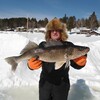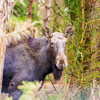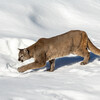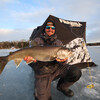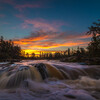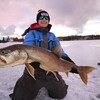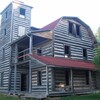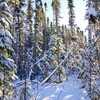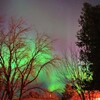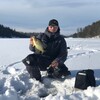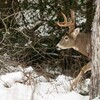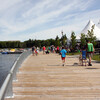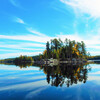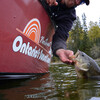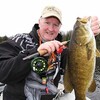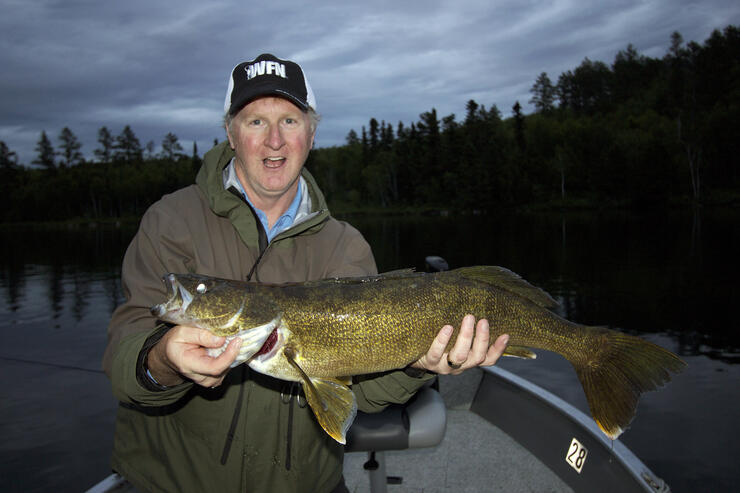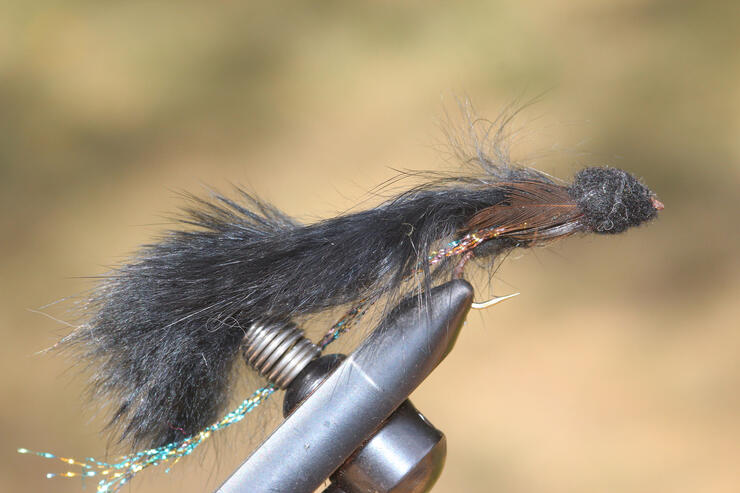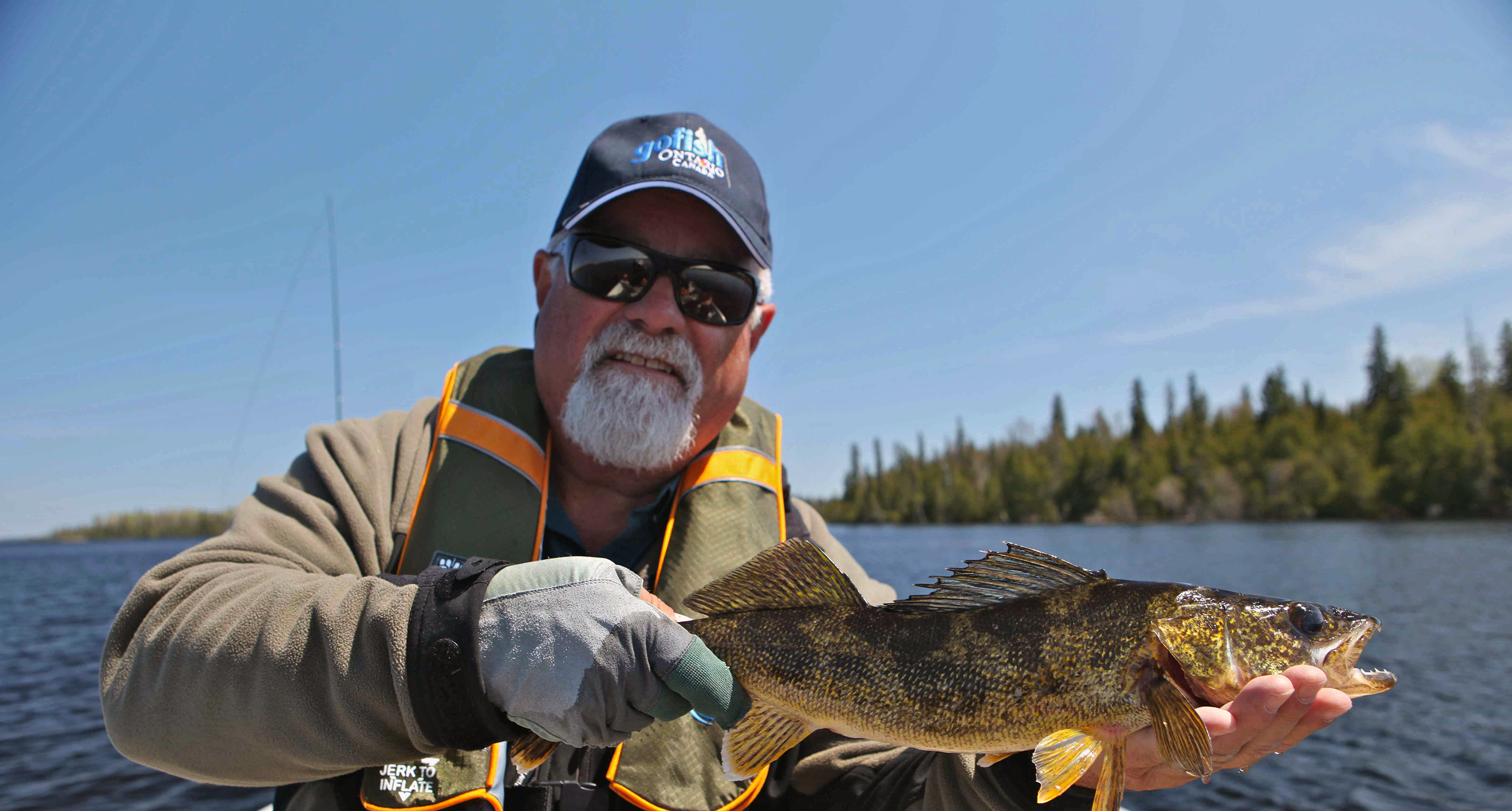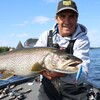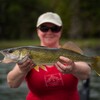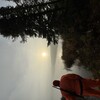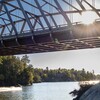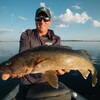The Bonus of Big Walleye
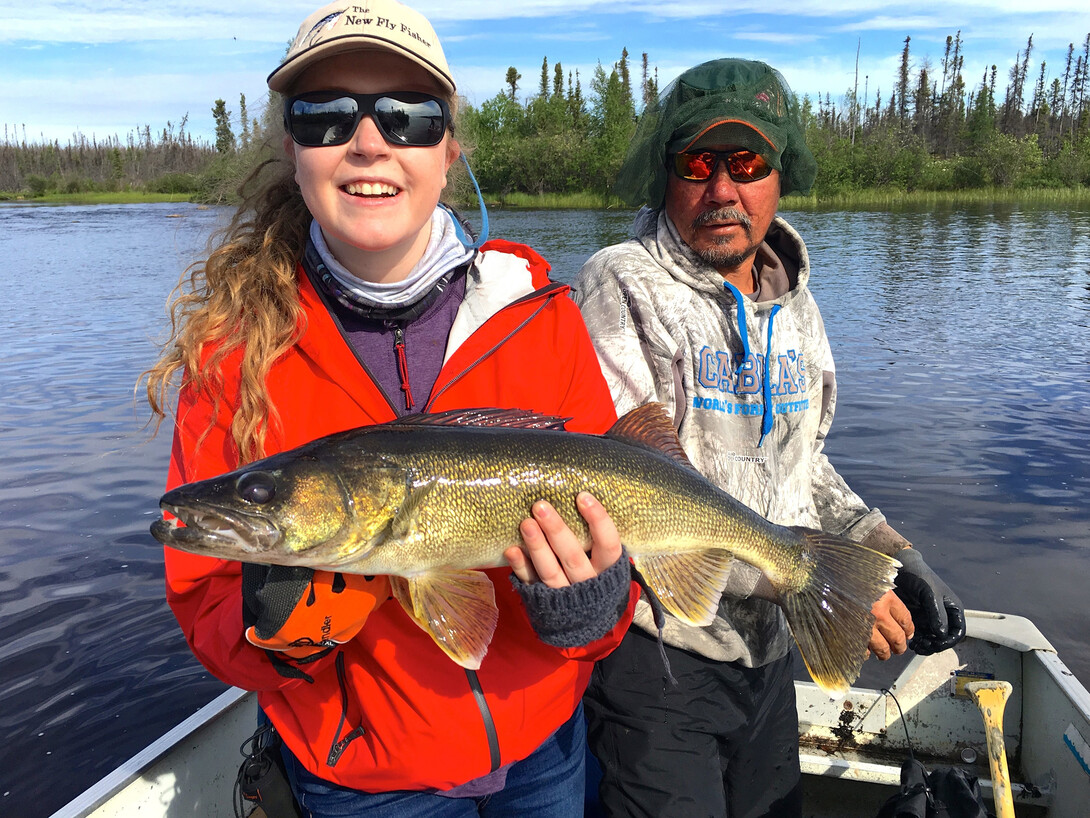
Most fly fishers don't think of walleye and fly fishing. But in Northwestern Ontario, this is often a reality. Usually, walleye stay deep, normally in 25 to 35 feet of water. In NW Ontario, especially in May through early July, the walleye come up into the shallows to hunt for food because the water temperatures are generally favorable. The true factor here in locating them is the time of day.
The common name, "walleye," comes from the fact that their eyes, like those of lions, reflect white light. This "eyeshine" is the result of a light-gathering layer in the eyes called the tapetum lucidum, which allows the fish to see well in low-light conditions. This translates to mean the best time to fish for them is just before dark or just after.
On many lakes and rivers in Northwest Ontario, huge schools of fat walleye will come up from the deep and forage on rocky flats, near points, and on submerged shoals. Usually, they can be caught in water from 6 to 14 feet deep! They love minnows and especially leeches, just like smallmouth.
The number one pattern I have used to catch walleye is the Woolhead Sculpin in either black or purple. This pattern is sold by reelflies.ca and is stock number RF4720. Why do I know this? Because I got tired of handing out all my black woolhead sculpins everywhere I have gone fishing for walleye. So I have this number written on a piece of paper in my wallet! They really work well but are usually within 1-2 feet of the bottom.
Sure, in lakes they will suspend, but when hunting they are normally hugging the bottom near the structure. I cast a full-sinking fly line, usually a 7 or 8 weight in a Type V configuration (4-5 IPS - inches per second) with a short leader to the fly. How short? I am talking 3-4 feet at most. I find a 12lb or 1x leader is best. Use one that has excellent abrasion resistance, as the leader will rub against rocks, branches, and other debris near the bottom. On the fly, I will work in fly floatant, especially into the woolhead. This makes the fly buoyant which pulls it toward the surface. With the short leader and a slow retrieve, you have a deadly means of catching walleye.
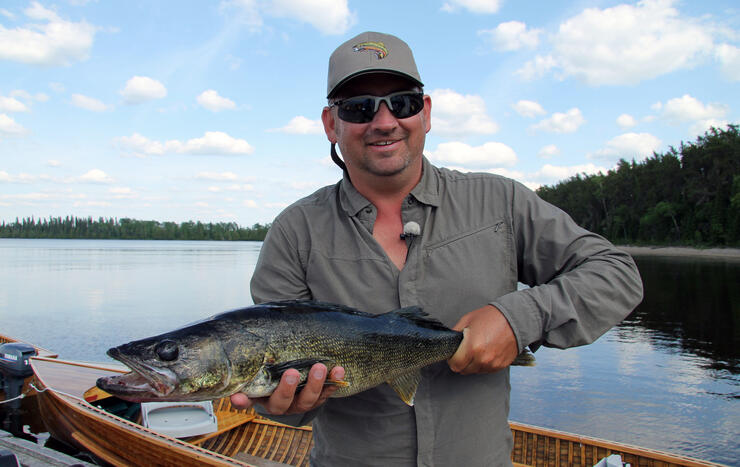
The night I used this setup was at Hawk Lake Lodge, there were three other boats nearby. All were using jigs tipped with either minnows or leeches. No one was catching fish, except me! The reason was simple – I was keeping the fly in the kill zone longer and I was going very slowly, which the conditions dictated. In fact that night I also hooked a very fat and robust smallmouth bass that came in at 20”. You can use this technique anywhere and for other species, including lake trout and brook trout. It really works well. When coming to Northwestern Ontario, do not ignore the walleye even when using a fly rod. They are abundant, massive, and a great deal of fun to catch on a fly rod.
In case you've missed any of the New Fly Fisher's TV shows, you can see many of the episodes on their website.
Recommended Articles

Is the 1,400 Kilometre Drive to Northwest Ontario For a Fishing Trip Worth it?
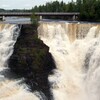
8 must-see waterfalls

6 Ways to Get Your 10,000 Steps This Fall

Top 5 Reasons You Should Be Fishing in Morson, Ontario

Discover The Winnipeg River

Enjoy Sunset Country's Fall Colours on Your Next Road Trip

Fishing in the Fall?

6 Reasons to Book a Fall Vacation to Sunset Country

10 Reasons to Avoid Ontario’s Sunset Country

Heading Across Canada?

A Guide to Sunset Country Museums
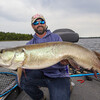
The Promised Land: Best Muskie Fishing in Ontario

Fall Fishing Tips
5 Essential Boreal Experiences in Ontario's Sunset Country

5 Obscure Facts About Northwestern Ontario: Were You Aware of These?

Great Food in Relatively Unknown Places
Outdoor Medicine

A Guide to Bringing Your Pets on Vacation to Canada

There's more than just fishing in the Red Lake Region

5 Amazing Sights You Can Only See By Boat

Going Fishing in Canada?

Going fishing in Ontario?

Outdoor Adventure in Ontario's Northern Paradise
Planning A Family Fishing Trip to Canada

Tips from a Fishing Legend


